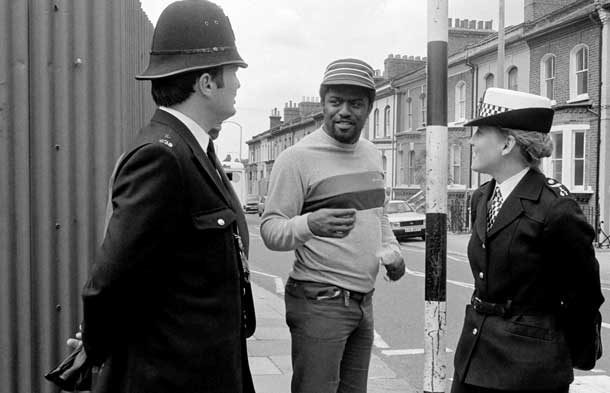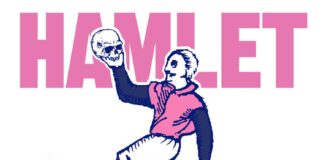
Photographer Honey Salvadori, a long-time local resident talks to Anna McKie about her new book, coming home and what Brixton was really like 30 years ago
has seen a lot of changes in Brixton: she has been living here, with the Brixton Housing Co-op, since 1982. A photographer and journalist who has documented the area throughout her career, she decided the time was right to create Pull it: Pull it, stories from the archive of Honey Salvadori.
There are two reasons why Salvadori decided to create it now, she tells me. “One: I thought there would be some interest in it because of what’s currently happening in Brixton,” she says. “I thought there’s an awful lot of people lamenting the past in Brixton but an awful lot of people who also don’t know what the past was like. So I thought I’d create something to actually show what it was like.”
The other reason is partly personal, she says. “I spent the last few years working outside London, and I got very fed up of not being at home, so it is my way of saying ‘I’m home again now’, I’m not going to commute up and down the country any more!” she laughs.
In her introduction, Salvadori is very clear: this is not a book about riots. “This book will not be documenting the damage caused on the mythic weekend of April 10th to 12th 1981,” she writes. “There will not be pictures of the debris from the 28 buildings that were damaged or destroyed by fire.

“This book is about Brixton and the people who live here. It is about what happened next and how Brixton evolved,” Salvadori explains.
To create the book, Salvadori pored over her personal archive of pictures and interviews. “The pictures come from a few things I did,” she says. “Firstly in 1983 when I was really a beginner, and my interviews with Greta Brooks, from the police consultancy group, and the commander of the police at the time – those are from that year.”
In 1986 a youth magazine asked Salvadori to do a project on drug addiction which, she says, was a breakthrough for her career. “But it always got used as kind of gruesome pictures of people doing drugs, and I always thought the pictures were also about character and humour and that king of thing. So it’s nice to use it in a way that I like.”
The final picture is from 1991 when she was photographing the poll tax events for the Telegraph. So in a way it follows her career too, she says. The book mingles Brixton’s changes and history with her personal experience. There are a few more recent pictures, such as a shot from last year’s Reclaim Brixton march. “The sign says ‘Brixton is my home’ and that’s how I feel,” she says.
She also did a few interviews more recently too; speaking to Andreas Demetriou and Henry Pim about the legacy of the South London Gay Community Centre and Julie Connolly, who squatted in Brixton in the mid-1980s, as she worked on the book.
Salvadori says the hunt through her archives and subsequent research for the book not only reminded her of what happened before, but also allowed her to learn more about Brixton’s history.
“I vaguely knew the origins about the Barrier Block and the motorway that never happened, but I didn’t know that it was a London-wide thing, it seems completely mad now! I see why they never did it. But I also see now why it was so derelict around here, because it had this planning blight hanging over it.”
What’s happening in Brixton is emblematic of the gentrification that’s been occurring across London, Salvadori says. “You can’t change, change,” she explains. “But change needs to be managed and with sensitivity,” she goes on.
There are some good aspects as it appears to be generating more prosperity for people here but there’s too much imposing things from outside, Salvadori says: “What’s happening under the arches is shocking!”
In the 80s Brixton did seem on the edge of gentrification, she says. “In the conclusion of the book I say that in the 80s change was more pragmatic and inclusive, it considered the people here.”
“I hope this book speaks for itself,” Salvadori says. “It’s nostalgia for people who were there then and interest for people who only arrived here recently so they can find out what we’re all feeling so nostalgic about.”
Pull it: Pull it, stories from the archive of Honey Salvadori is available from September 8, £9.95, here.















